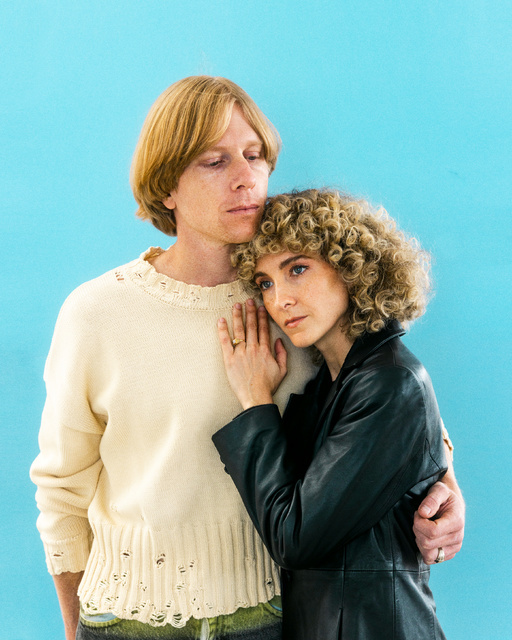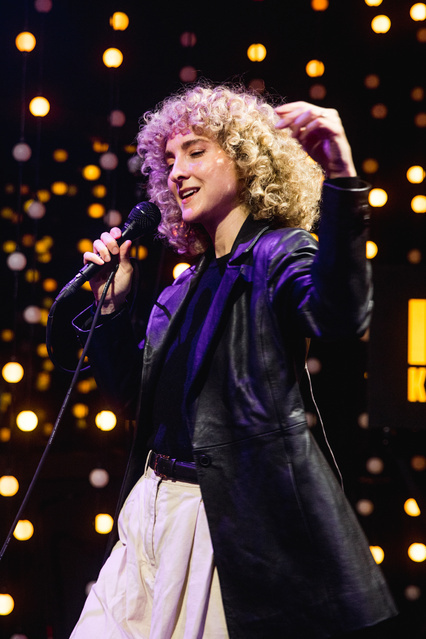Tennis are husband-and-wife duo Alaina Moore and Patrick Riley, who got their start in the Denver music scene in 2010 before captivating the indie pop world with their earnest melodies and dreamy, retro-futuristic sound. Tennis draws inspiration from nostalgic timbres, meticulously crafting a warm, soft-focus ambiance reminiscent of classic recordings from the 1950s and '60s. Tennis’ seventh record, Pollen, is the band’s most fully realised yet, showcasing Moore’s wistful voice floating above an expansive mix of richly layered mix of psychedelic synths and throbbing bass lines, all punctuated by sweeping guitar riffs.
Influenced by their collaborations with producers Patrick Carney (The Black Keys), Jim Eno (Spoon), and Richard Swift (The Shins), Moore and Riley later turned to self-producing, recording Pollen in their home studio and releasing it on their label, Mutually Detrimental, in early 2023. We caught Moore and Riley on a break between tour dates to find out how they shape their distinctive sounds in the studio and onstage, with help from Audix OM5, OM6, D6, and A133 and ADX51 microphones.
We understand you met as philosophy majors after you both had dropped out of music programmes, only to discover a common musical inspiration later on.
Patrick Riley: We were both music majors. She was a vocal performance major, I was a recording major. And I had a few failed bands at the time, and a few music prospects that didn't work out, and that was enough. I was like, "I quit music.” I sold all my gear and I said, "I'm never playing guitar again." And then I switched my major to philosophy.
Alaina Moore: I was failing all my music classes, whereas I'd normally been a very good student. I had always sang and played piano, and then when I became a music major, I didn't realise how ‘mathy’ it was.
I truly hated it. I hated being graded on it, I hated every assignment, and my grades were plummeting. I ended up transferring schools, taking time off, and then was looking at the courses available for all of the liberal arts programs, and philosophy was very resonating with me. As soon as I found it, I was thriving in school.
Riley: Alaina and I, after dating for multiple years, we were randomly talking about music and how we wish bands were making things that had that sound from the ’50s and ’60s, or just took inspiration from the ’50s and ’60s.
Moore: We were out one night and a song by The Shirelles, “Baby It's You,” came on. I was marvelling at the drum tones, something I didn't even really have the language for yet. I wondered, "Why doesn't modern music have drums that sound like this?" Pat said, "Weirdly, I know how these drum tones were achieved because I was in audio engineering in my past." I didn't even know this about him at the time. And then I said, "I really wish someone would start a band that was based off this sonic palette and this type of recording." Pat said, "Well, we could do that. I know how to do that." So we started doing it, and little did we know that that was the cultural moment when lo-fi music and surf pop all started coalescing at once. And that's how our band was born.



